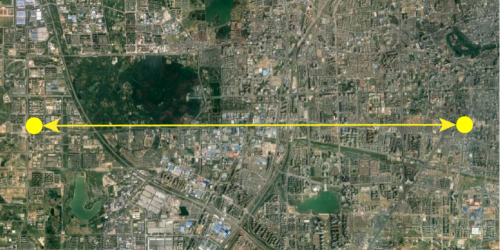Distant Memories Entangled
The quantum internet promises secure communications, precise sensing, and distributed quantum computing. Progress toward this dream is often measured by the distance that quantum information is shared over optical fibers or satellite connections. Researchers have now demonstrated an optically connected pair of entangled quantum memories separated by 12.5 km; the longest physical separation so far achieved [1].
Regular readers may recall longer distances of quantum connections (see for example Synopsis: Demonstrating Quantum Communication Under Realistic Conditions). Those experiments involved sending entangled photons; the new experiments establish entanglement between two atom-based memory elements. “In the previous realization of entanglement distribution using satellites or fibers, further connectivity with other links is challenging,” says Xiao-Hui Bao from the University of Science and Technology of China. By contrast, storing information in quantum memories provides a “buffer” for distributing entanglement over a network of links.
In the experiment of Bao and colleagues, the memory elements are both atomic gases that store information in the form of spin waves for relatively long times (around 100 𝜇s). The first element’s information is “written” onto a photon that is downconverted in frequency and sent over 20 km of a commercial fiber network to the second memory element. The researchers overcame several challenges, including the synchronization of the pump lasers in the two distant labs.
The next step will be to include a “heralding” signal that tells researchers when entanglement is established (the current method involves “postselection” in which entanglement is verified with measurements). In another work, a separate group demonstrated heralded entanglement between memories connected by 33 km of fiber [2]. But for that study the experiment was performed in a lab setting over spooled fiber rather than the urban environment of Bao and colleagues’ demonstration.
–Michael Schirber
Michael Schirber is a Corresponding Editor for Physics Magazine based in Lyon, France.
References
- Xi-Yu Luo et al., “Postselected entanglement between two atomic ensembles separated by 12.5 km,” Phys. Rev. Lett. 129, 050503 (2022).
- Tim van Leent et al., “Entangling single atoms over 33 km telecom fibre,” Nature 607, 69 (2022).




